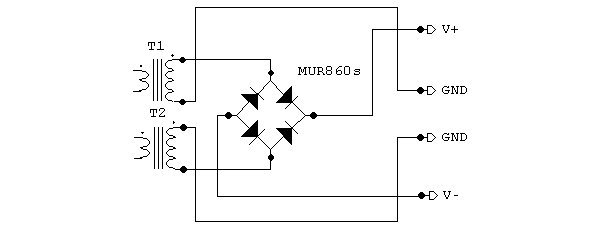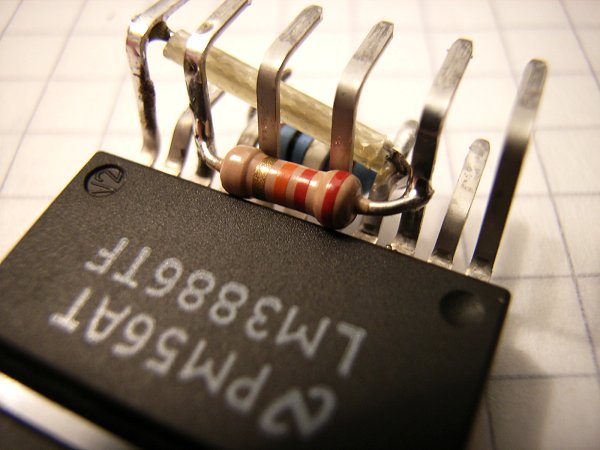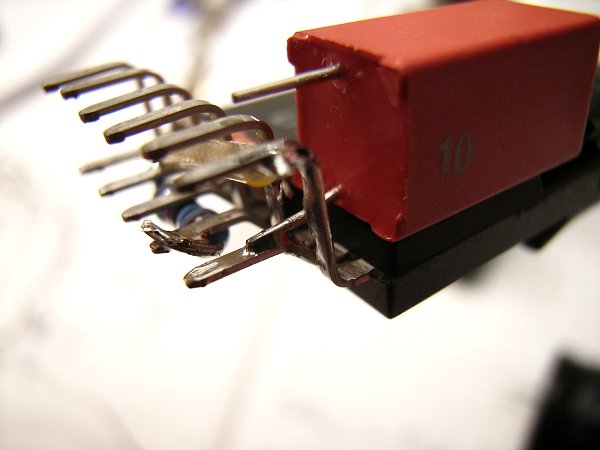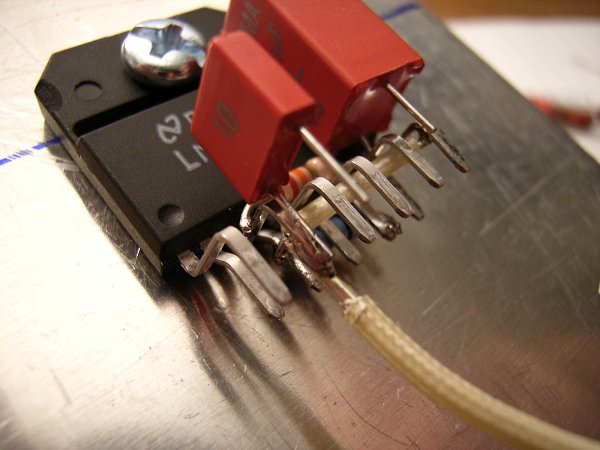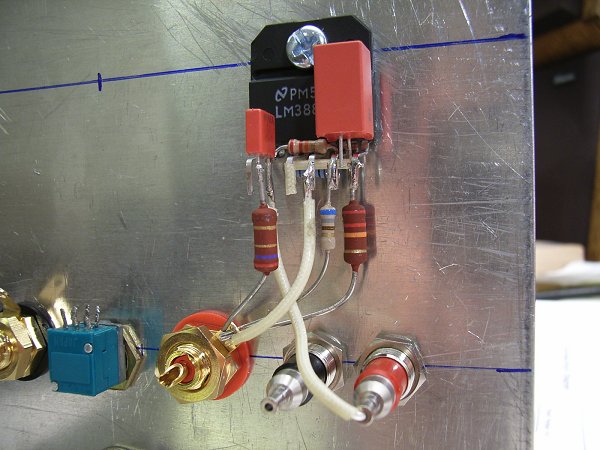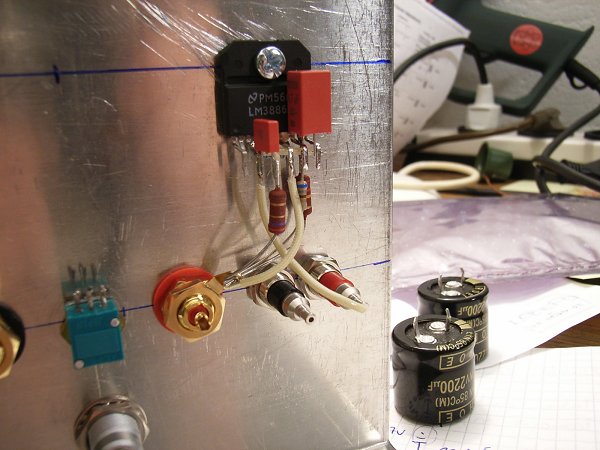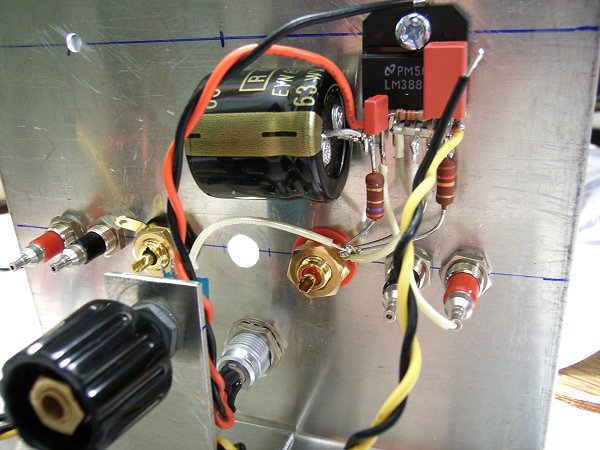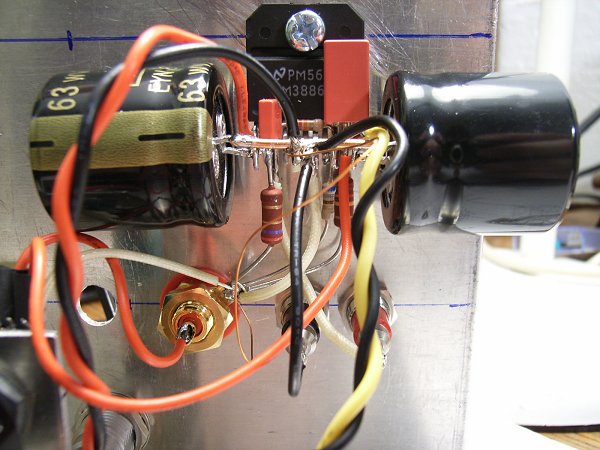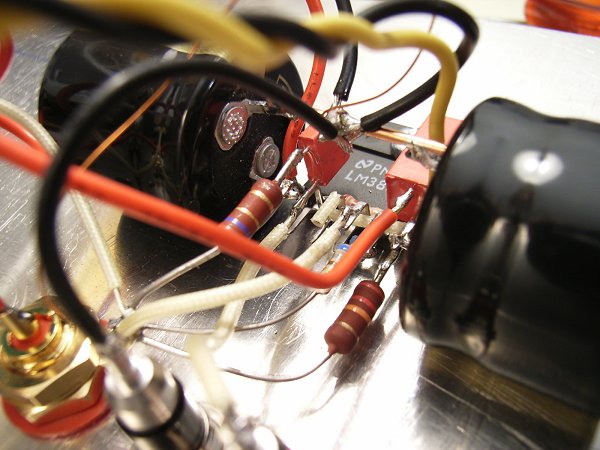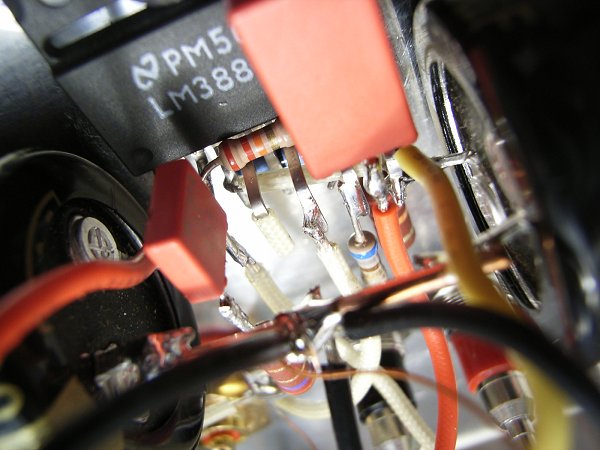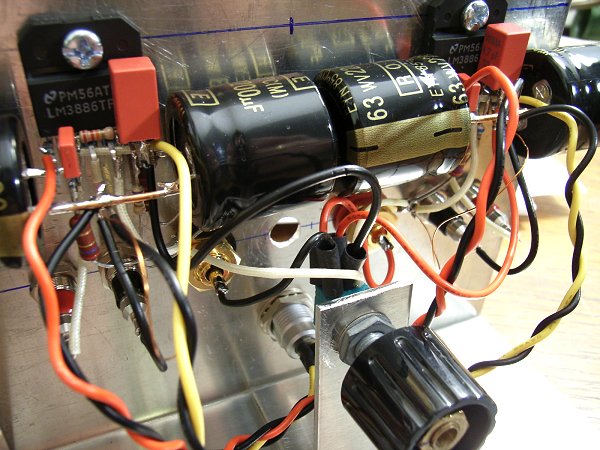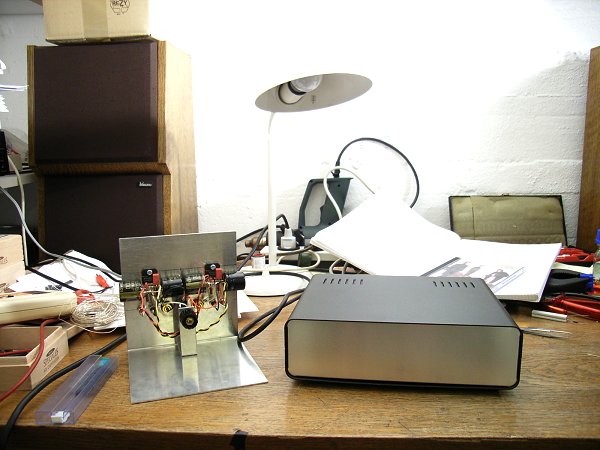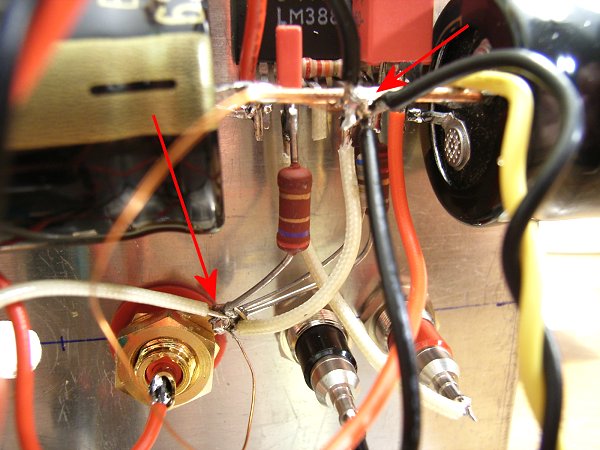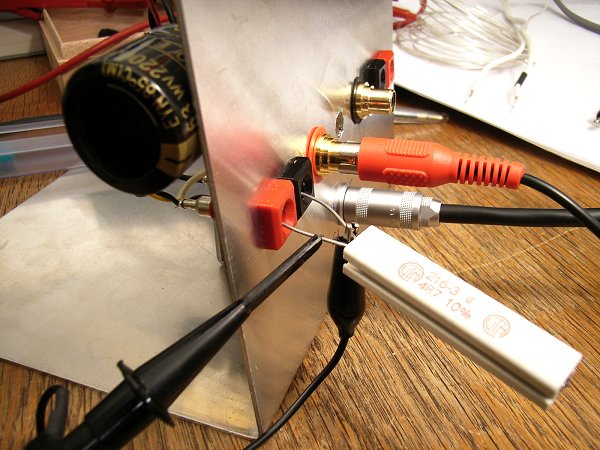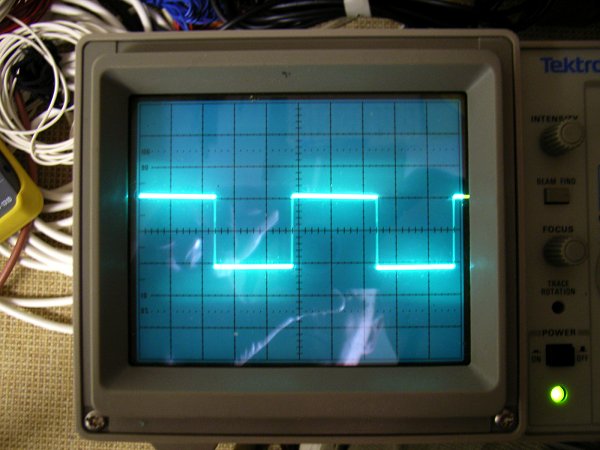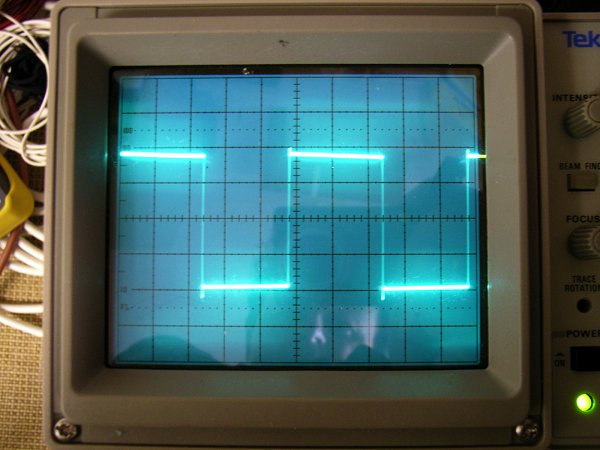|
The grounding scheme. The mains earth is connected to the PSU case directly.
The two ground connections (+ and - grounds) are lead to the amp separately
(see Fig. 2). The cable used for the PSU-amp connection is a shielded
four-wire cable. The shield is connected to both the amp and the PSU cases.
The ground connections coming from the PSU are split (left and right
channel) in the amp and both are connected to the power star ground of
the respective channel. The power stars, as shown below, are connected
to the signal stars by a thin wire. One power star is connected
to the case.
At each power star the PSU grounds, the speaker return and the connection
to the signal star are connected. All other grounds are connected
to the signal star.
Note that the separation of signal and power star ground is another deviation
from the original Gaincard layout.
|

